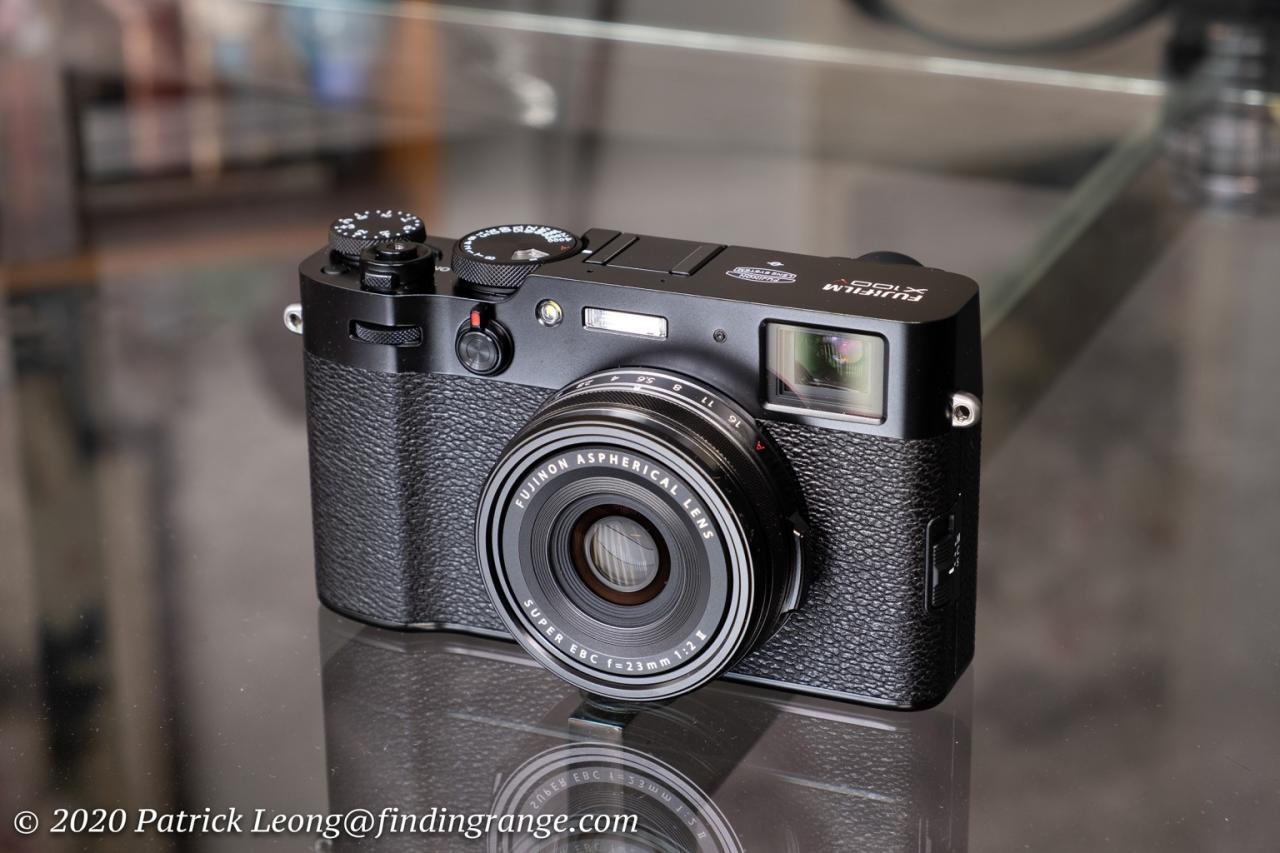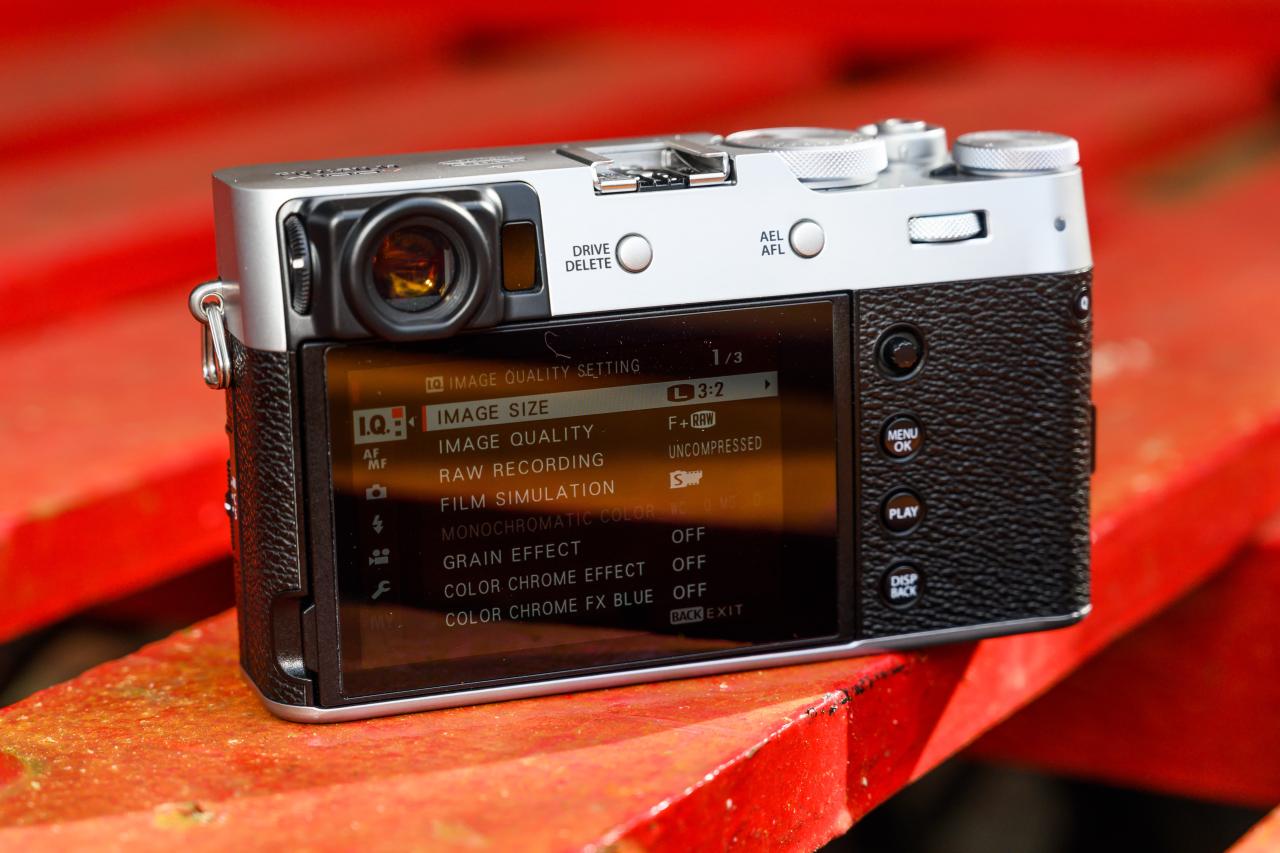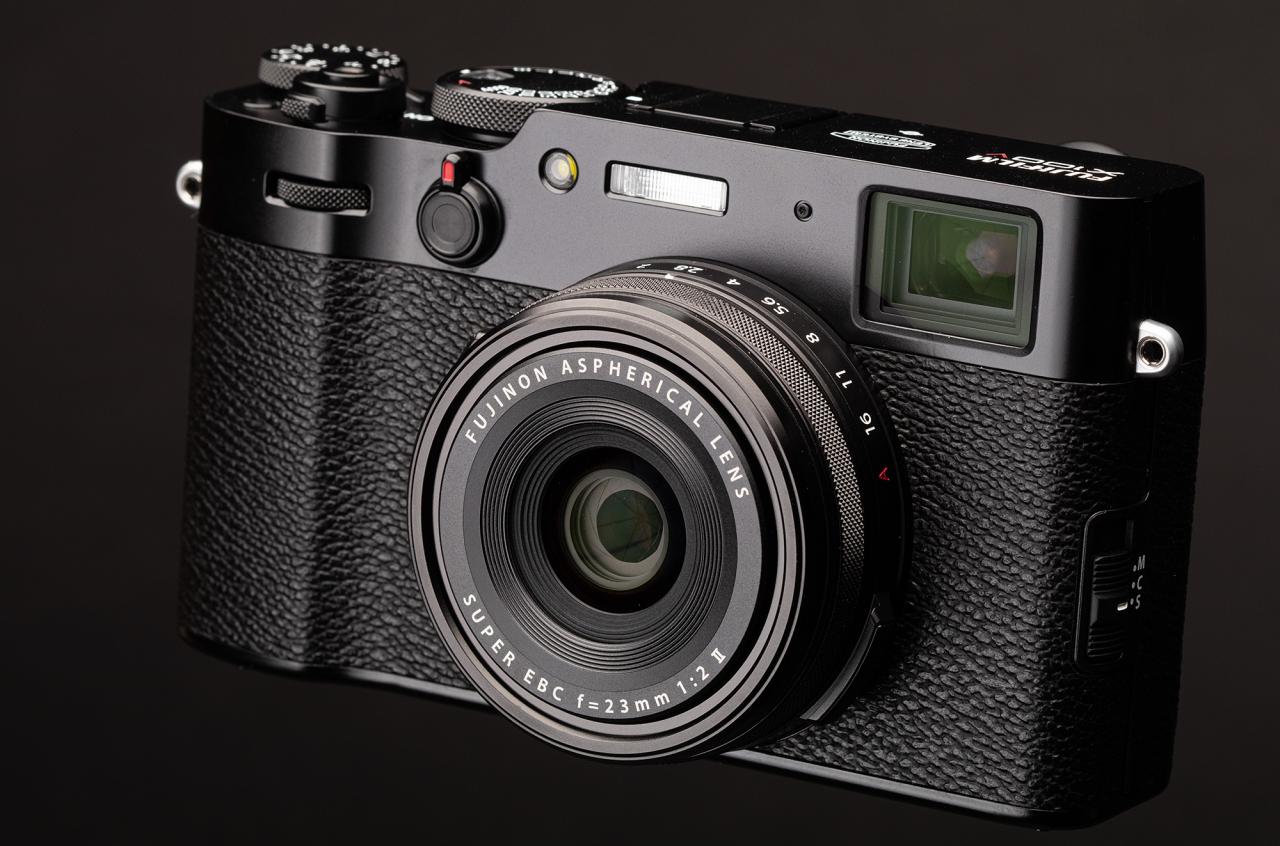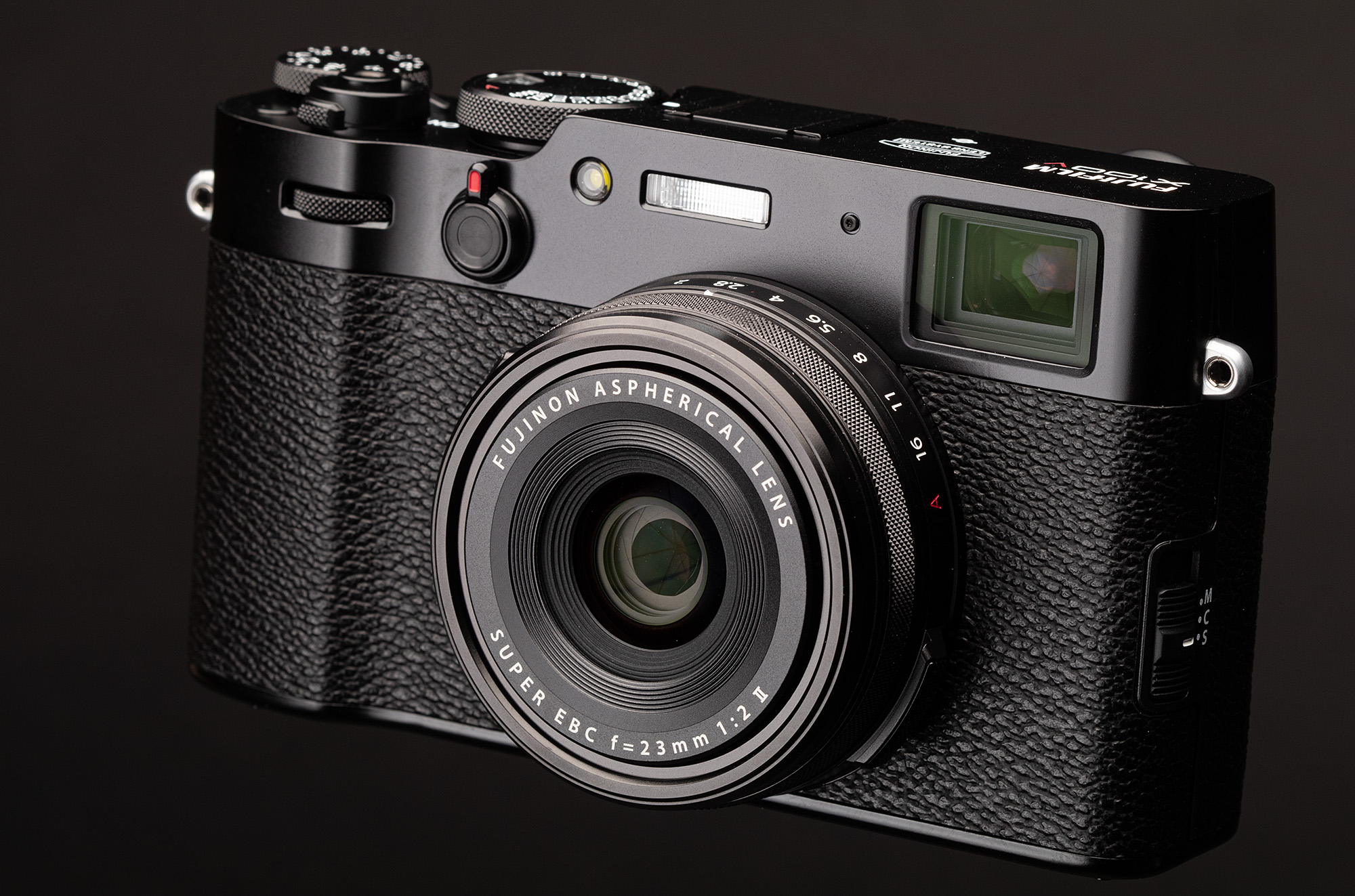The Fujifilm X100V stands as a compelling example of a premium compact camera, seamlessly blending classic aesthetics with cutting-edge technology. Its retro design, coupled with exceptional image quality and versatile features, has garnered significant attention among both professional and amateur photographers. This review delves into the X100V’s capabilities, exploring its strengths and weaknesses to provide a balanced perspective for potential buyers.
From its impressive hybrid viewfinder and intuitive controls to its renowned film simulations and robust build quality, the X100V offers a unique photographic experience. We’ll examine its performance in various shooting scenarios, compare it to competitors, and discuss its overall user experience to determine whether it lives up to the hype.
Fujifilm X100V: A Deep Dive

The Fujifilm X100V, a compact powerhouse, continues the legacy of its predecessors, offering a compelling blend of retro aesthetics and modern technology. This review delves into its features, performance, user experience, and overall value, providing a comprehensive assessment for prospective buyers.
Fujifilm X100V: Camera Features and Specifications
The X100V boasts a 26.1MP X-Trans CMOS 4 sensor, a significant upgrade from its predecessor. Its fixed 23mm f/2 lens (35mm equivalent) provides a versatile focal length ideal for street, landscape, and portrait photography. The autofocus system is a hybrid approach, combining phase detection and contrast detection for improved speed and accuracy. Below is a comparison table highlighting key differences between the X100V and the X100F:
| Feature | X100V | X100F |
|---|---|---|
| Sensor | 26.1MP X-Trans CMOS 4 | 24.3MP X-Trans CMOS III |
| Lens | 23mm f/2 (35mm equivalent) | 23mm f/2 (35mm equivalent) |
| Autofocus System | Hybrid (Phase Detection & Contrast Detection) | Contrast Detection |
| Viewfinder | Hybrid Optical/Electronic | Optical |
The X100V’s unique features include its hybrid viewfinder, seamlessly switching between optical and electronic modes, offering the best of both worlds. Its renowned Film Simulations, emulating classic Fujifilm film stocks, provide distinct looks and creative control over image aesthetics. The camera’s build quality is exceptional, featuring a robust magnesium alloy body with weather sealing, ensuring durability.
Image Quality and Performance, Fujifilm x100v
The X100V consistently delivers excellent image quality across various shooting conditions. Its high-resolution sensor captures fine detail, while its dynamic range allows for recovery of shadow and highlight detail.
- Low Light: The X100V performs admirably in low light conditions, producing images with minimal noise even at higher ISO settings. Careful use of the camera’s ISO settings, combined with a fast lens, can produce stunning results.
- Bright Sunlight: In bright sunlight, the camera’s dynamic range allows for accurate exposure and preservation of details in both highlights and shadows. The lens’s ability to handle contrast effectively minimizes harsh highlights.
Compared to competitors like the Sony RX1R II and Ricoh GR III, the X100V offers a unique blend of image quality, retro aesthetics, and versatile features. While the Sony RX1R II might boast a higher resolution sensor, the X100V’s film simulations and overall user experience make it a compelling alternative. The Ricoh GR III excels in compactness, but the X100V’s superior dynamic range and film simulations provide more creative flexibility.
Fujifilm’s Film Simulations offer a wide array of stylistic choices. For instance, Classic Chrome provides muted tones and subtle color saturation, while Acros delivers fine-grained monochrome images. Velvia produces vibrant and saturated colors, ideal for landscape photography. Each simulation alters the final image’s contrast, saturation, and sharpness, providing a distinct artistic character.
User Experience and Workflow
The X100V’s user interface is intuitive and well-organized. The menu system is logically structured, making it easy to navigate and adjust settings.
- Intuitive button layout and customizable function buttons allow for quick access to frequently used settings.
- Clear and concise on-screen displays provide real-time feedback on camera settings and exposure information.
- The menu system is well-organized and easy to navigate, even for users unfamiliar with Fujifilm cameras.
Shooting in Aperture Priority, Shutter Priority, and Manual modes is straightforward and responsive. Image transfer to a computer or mobile device is simple via USB connection or wireless transfer using the Fujifilm Camera Remote app. This app allows for easy image review, transfer, and remote camera control.
Strengths and Weaknesses of the Fujifilm X100V

The X100V shines in several key areas, but it also has some limitations.
- Strengths: Excellent image quality, versatile hybrid viewfinder, and iconic design.
- Weaknesses: Limited zoom capabilities (fixed lens), relatively high price point, and some users may find the menu system slightly complex.
Compared to the Sony RX1R II:
| Feature | X100V | Sony RX1R II |
|---|---|---|
| Strengths | Image quality, Film Simulations, Hybrid Viewfinder | High Resolution Sensor, Excellent Image Quality |
| Weaknesses | Fixed Lens, Price | Price, Limited Features |
Sample Photography Scenarios and Image Descriptions

The X100V’s versatility shines in various photographic scenarios.
Street Photography: A bustling city street scene, captured using the X100V in Aperture Priority mode (f/2.8, 1/250s, ISO 800). The shallow depth of field isolates a subject walking down the street, while the background is softly blurred, creating a sense of movement and depth. The Acros film simulation enhances the monochrome tones, resulting in a classic, timeless look. The camera’s quick autofocus locked onto the subject swiftly, allowing for capture of the decisive moment.
The Fujifilm X100V, with its exceptional image quality, is perfect for capturing stunning stills, especially when documenting your adventures. If you’re planning on incorporating aerial photography into your projects, remember to obtain the necessary transport canada drone license beforehand. This ensures you remain compliant while using drones to complement the ground-level images from your X100V.
Landscape Photography: A sweeping vista of a mountain range at sunset, shot in Aperture Priority mode (f/8, 1/125s, ISO 200). The landscape is captured using the Classic Chrome film simulation to achieve a subtle color palette and enhanced detail. The wide angle lens captures the grandeur of the scene, while the precise exposure reveals the rich detail in the sky and mountains.
Portrait Photography: A close-up portrait of a person, taken using the X100V in Aperture Priority mode (f/2, 1/125s, ISO 200). The shallow depth of field, achieved with the wide open aperture, creates a pleasing bokeh effect, isolating the subject against a blurred background. The Velvia film simulation delivers vibrant and saturated skin tones. The composition focuses on the subject’s eyes, creating a compelling and intimate portrait.
Accessories and Customization Options
A range of accessories enhance the X100V’s functionality and shooting experience.
- Filters: UV filters protect the lens, while ND filters allow for creative control over exposure in bright conditions.
- External Flashes: External flashes provide additional lighting options for low-light situations or creative lighting effects.
- Leather Cases: Leather cases offer protection and enhance the camera’s retro aesthetic.
The X100V offers extensive customization options. Function buttons can be assigned to frequently used settings, streamlining workflow. The camera’s menu system allows for fine-tuning of various parameters, including white balance, sharpness, and noise reduction. These customizations tailor the camera to individual shooting styles and preferences, enhancing the overall shooting experience.
Ultimately, the Fujifilm X100V proves to be a highly capable and enjoyable camera, ideal for photographers who value image quality, portability, and a satisfying shooting experience. While it may not be perfect, its strengths significantly outweigh its weaknesses, making it a strong contender in the premium compact camera market. Its classic design and exceptional image quality ensure it remains a desirable choice for both enthusiasts and professionals alike.
FAQ Resource
Does the Fujifilm X100V have image stabilization?
No, the X100V lacks in-body image stabilization. However, its fast lens and effective autofocus system can mitigate the effects of camera shake to some extent.
What type of battery does the X100V use?
It uses a NP-W126S rechargeable lithium-ion battery.
Can I shoot video with the X100V?
The Fujifilm X100V’s compact size makes it ideal for street photography, capturing candid moments effortlessly. However, even with its portability, one must be mindful of airspace regulations; news reports, like this article on drone crashes in New Jersey , highlight the importance of responsible use of technology. Ultimately, the X100V’s focus remains on capturing the perfect image, irrespective of aerial activity.
Yes, it can shoot 4K video at 30fps and 1080p video at up to 120fps.
How is the low-light performance?
While not the best in its class, the X100V’s performance in low light is quite acceptable, producing usable images with relatively low noise up to ISO 3200.
